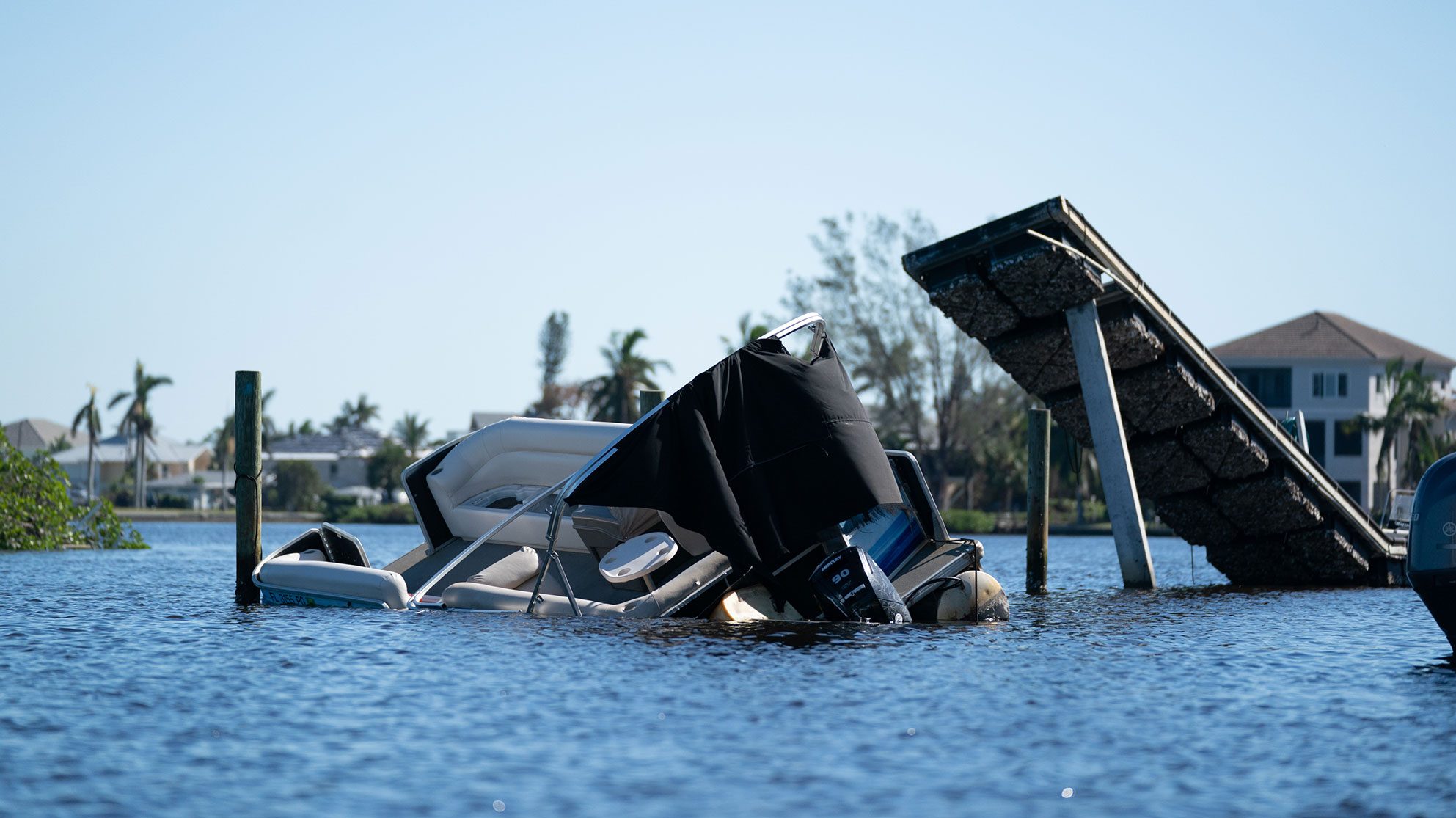Hurricane Ian news report for September 30

Hurricane Ian is moving towards South Carolina after leaving several dead and millions without power in Florida
In this aerial photo, boats are seen piling on top of each other at a marina near Fort Myers Beach on San Carlos Island, Florida.
As Florida grapples with devastating damage from Hurricane Ian in what officials say may be the largest natural disaster in the state’s history, South Carolina residents are bracing for the expected arrival of hurricane Friday noon.
Hurricane Ian intensified again in the Atlantic after leaving at least 19 dead in Florida and millions without power, with winds of nearly 136 kph on its way to the South Carolina coast, and is expected to make landfall just west of Myrtle. Beach. A hurricane warning has been issued from the Savannah River on the Georgia-South Carolina border to Cape Fear, North Carolina.
State Fire Chief Jimmy Patronis told CNN Thursday that the hurricane’s devastating path through Florida caused unusual flooding and storm surge, triggering the largest emergency response in state history. Hundreds of rescues were carried out by land, air and sea, with residents trapped in their homes or stranded on rooftops. Governor Ron DeSantis said some homes in Fort Myers Beach have been reduced to just concrete slabs, describing the damage in parts of the state as “unspeakable.”
The hurricane hit the southwest coast of Florida on Wednesday as a Category 4 hurricane, with winds reaching 140 miles per hour, causing extensive damage to homes, vehicles and businesses. Officials warn that the road to recovery will be long.
This is what you should know:
Dozens of reported deaths: At least 19 storm-related deaths have been reported in Florida so far, although that number is likely to increase. Most of these deaths are in the hardest-hit Lee and Charlotte counties. President Joe Biden said Thursday that Ian could be “the deadliest hurricane in Florida’s history.”
More than 2.2 million without power: Millions of people in Florida who were on Ian’s way were still in the dark as of early Friday morning, according to PowerOutage.us. Most of the counties with the highest populations without electricity are in the southwest, including Lee, Charlotte, Hardy, and Sarasota. Thirteen counties reported that more than 50% of tracked customers had no electricity.
Historic Floods in Some Areas: Record floods have been reported in central and northern Florida, including at least three rivers that reach all-time flood records. Orlando authorities have warned residents of dangerous flooding. They said some of the standing water was electrifying.
Hundreds of rescues, thousands of evacuations: The governor said Thursday that more than 700 rescues have been conducted statewide so far, with thousands of evacuees reported. In Lee County, the hospital system had to evacuate more than 1,000 patients after the water supply was cut off, while other large-scale evacuations were reported in prisons and nursing homes.
Coastal islands completely cut off: The Sanibel and Captiva islands in southwest Florida have been completely cut off from the mainland after parts of a major waterway were cut off.
Local officials said at least two people have died in Sanibel and the road may need to be completely rebuilt. Chip Farrar, a resident of the small island of Matlacha, told CNN that parts of the main access road to the mainland bridge have collapsed, and a second bridge nearby has also collapsed.
As Hurricane Ian moved away from Florida, the governors of South Carolina, North Carolina, Georgia and Virginia declared states of emergency.
In South Carolina, Governor Henry McMaster appealed to residents not to underestimate storm risk and urged them to follow storm warnings closely to prepare for Friday’s impact. It’s expected to make landfall at high tide, which could significantly worsen flooding in low-lying areas, according to Taylor Ward, a CNN meteorologist.
When it’s all over, Storm Ian’s system will likely have left permanent changes in its wake.
Coasts along Georgia and South Carolina may experience significant turbulence as strong waves and storm surges caused by Ian can inundate coastal sand dunes, according to the US Geological Survey. In addition to flooding communities behind dunes, the USGS said a storm could push sand back and deposit it inland, which could “reduce the height of protective dunes, alter beach contours, and leave areas behind dunes more vulnerable to future storms.”

“Bacon advocate. Certified creator. Twitteraholic. Tv junkie. Beer fanatic. Internet nerd. Passionate thinker. Reader.”




:quality(85)/cloudfront-us-east-1.images.arcpublishing.com/infobae/OF4NJDPGLBEYJAZ5XZMH3OIPJ4.jpg)



